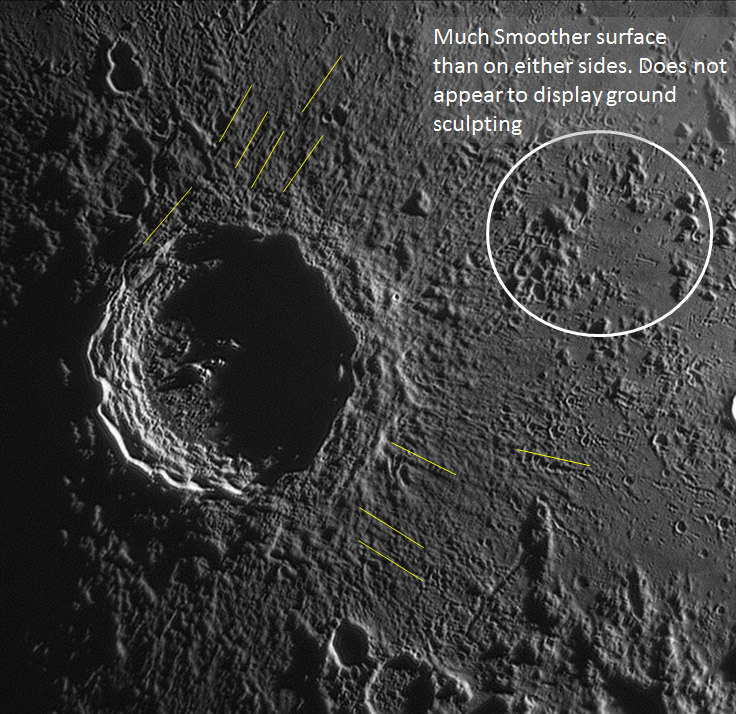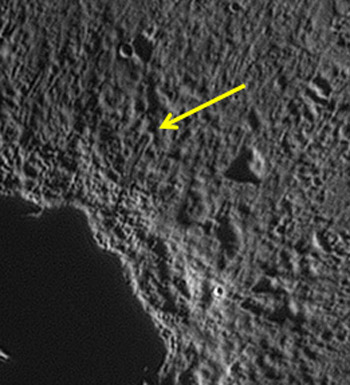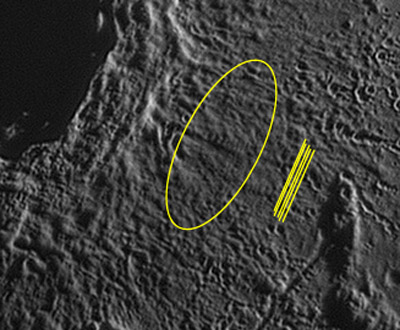November 25, 2013
Looking More Closely

south up image by George Tarsoudis and annotations by Deepak Dhingra
Thanks for posting yesterday's magnificent LPOD on Copernicus. I could not agree less with you that it is never too much :) I want to post a couple of observations for discussion.
1. Ejecta distribution (Direction, Smoothness)
I am a little confused about the observations marked on the image above. First, the yellow lines are marking some linear trends that I think are there and might likely be capturing the ejecta movement. If that is so, isn't it odd that the S-SW trends are so oblique to the crater rim?
Zooming out, comparing these yellow lines in the NW and SW and surface roughness there, with the Western region marked with a white circle, it appears strange that the area within the white circle is much smoother with no visible grooves (surface scuplting). Could it be that the knobs there might have impeded (and scattered) the ejecta movement there?
CAW Comment: More than 50 years ago Gene Shoemaker noted that ejecta from Copernicus was not all radial, but some was tangential, and of course, the secondary streams near Stadius have very convoluted relations with Copernicus. I guess what this means is that the way real rocks respond to a hyper-velocity impact is modified by their pre-existing strengths and weaknesses in ways that are hard to understand - at least for me to understand.
There have been suggestions that topography west of Kepler interfered with its ejecta/rays. I thought that those materials were more ballistically emplaced, but maybe some are ground-hugging.
 |
2. Crisp Melt Lobe I have kind of seen this 'melt flow' up close in the recent high resolution spacecraft data but it is cool to see it in perspective of the whole crater and in a telescopic image! The illumination is very well suited to capture this beautiful feature. |
| 3. Fine Structure or Just my Eye? We as humans are so good at finding trends and patterns that at times, we can 'create' patterns in an observation even when they do not exist. In staring at this image, my eye was drawn to a parallel set of very fine features (marked by the yellow ellipse and illustrated by yellow lines). I don't know if they are real or the illumination is playing trick here but I do think that I have seen similar features in high resolution images. The scale may be very different but the nature of the features was perhaps similar. Any thoughts? |
 |
Deepak Dhingra
Additional CAW thoughts I am really pleased to receive these questions, for they result from doing what I hope LPOD readers do every day - look critically at the image and try to interpret it, even the things that the text doesn't mention, but that stand out to you. Please use Comments to add your interpretations and questions.
Yesterday's LPOD: Never Too Much
Tomorrow's LPOD: My Best Manners - And Then Some



